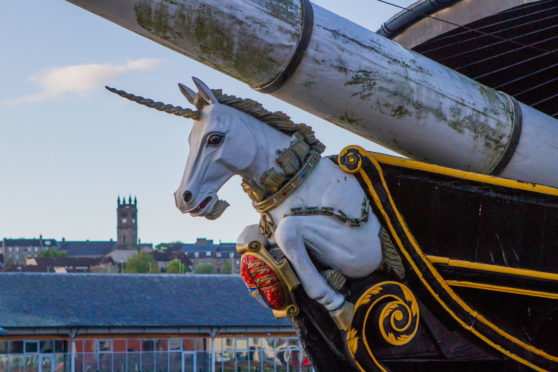
Today marks National Unicorn Day, a celebration particularly relevant to Scots.
Our national animal may belong in mythological tales, but it has been a symbol of the nation for many centuries.
Seen in medieval times as a symbol of purity, nobility, masculinity, courage and strength, it was first used on the coat of arms of William I in the 12th Century.
It was a fitting choice for a nation steeped in tales of myth and legend and fighting against being conquered by enemy forces.
The unicorn was used on gold coins during the 15th century reign of King James, and would go on to appear on the Scottish Royal Arms as James VI unified Scotland and England.
When he became James I, he replaced one of the two unicorns with the English national animal, the lion, in a bid to represent the union.
Unicorns and lions had long been seen as enemies, the unicorn ruling through harmony and the lion by might.
The unicorn remains on Scotland and the United Kingdom’s coats of arms to this day.
In depictions, the animal is often seen bound by golden chains wrapped around its body.
Believed to be the strongest of all animals and only tamable by virgin maidens, the chains are believed to signify the power of Scottish Kings in being able to humble the wild beast, and some also see it as a symbol of Scotland being oppressed.
Unicorns can be found (in statue form, of course) at Edinburgh Castle, on the Stirling Tapestries and on the fittingly named HMS Unicorn in Dundee.

Enjoy the convenience of having The Sunday Post delivered as a digital ePaper straight to your smartphone, tablet or computer.
Subscribe for only £5.49 a month and enjoy all the benefits of the printed paper as a digital replica.
Subscribe